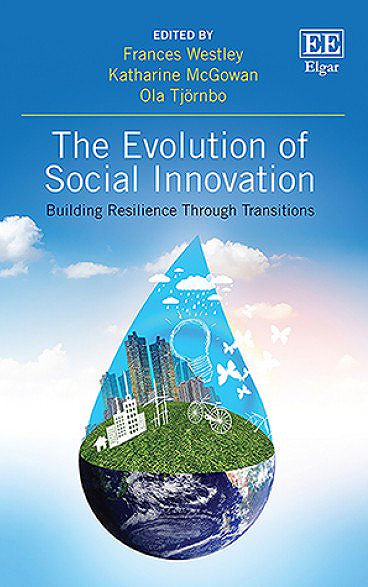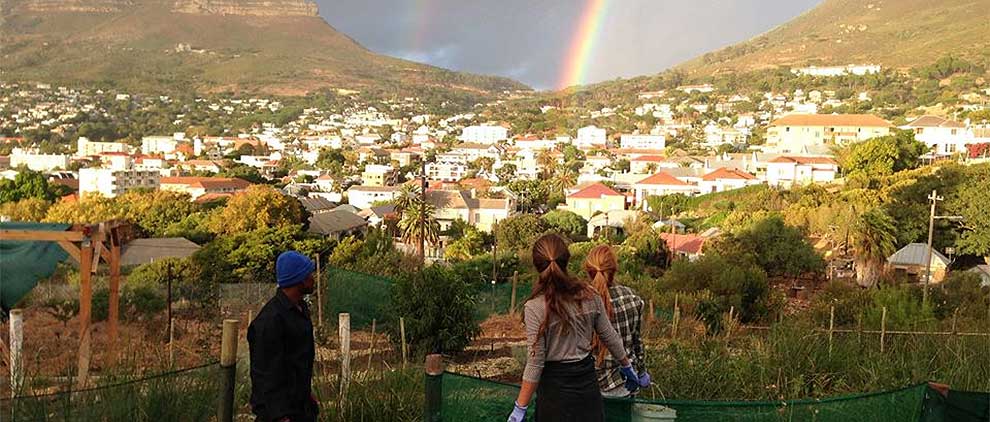Bildtext får vara max två rader text. Hela texten ska högerjusteras om den bara ska innehålla fotobyline! Photo: B. Christensen/Azote
Book release
From social to transformative innovations
New book on the evolution of social innovation and how to make them more transformative
- Research at the centre has long studied how social innovation is linked to ecosystems and large-scale sustainability transformations
- Two centre researchers contribute to a new book that explores what it takes for social innovation to have true transformative potential
- The book’s diverse collection of historical cases shows how looking back can inform the future of social innovations for transformative change
Everybody seems to be talking about social innovations these days. Governments, aid organisations, philanthropists and civil society organizations increasingly put their hopes in social innovation to solve the grand challenges of our time. Researchers at the Stockholm Resilience Centre have long emphasised the need to understand how social innovation is linked to ecological aspects, a notion that has been embodied in the concept social-ecological innovations that are beneficial for both people and planet.
In particular, research at the centre has explored how such innovation is linked to agency, social networks and institutions, with special emphasis on how innovations can contribute to large-scale transformations. This research has, for example, concluded that mainstream innovation is too focused on singular solutions and treat ecological and social challenges independently.
An impressing variety of cases
A new book edited by the chair of Stockholm Resilience Centre’s board, Frances Westley, together with Katharine McGowan from Mount Royal University and Ola Tjörnbo from University of Waterloo, explores what it takes for social innovation to have true transformative potential.
The book, which is entitled The Evolution of Social Innovation: Building Resilience Through Transitions compares a range of historical cases across an impressing variety of problem domains, including chapters on the establishment of American national parks, the creation of the Internet, legalization of birth control and the invention of the intelligence test.
Some of the cases may initially surprise the readers, the three editors write in the introduction chapter. Most conversations about social innovations start in the present and look towards the future, but the new book takes a more historical approach.
With this collection of cases, we seek to establish that work on social innovation provides a new lens for examining social transformation, and that looking back through history can illuminate the complex processes of transformation and innovation
Frances Westley, co-author
Entrepreneurship as agency
Centre researcher Per Olsson has written chapter 4 of the book, entitled “Agency and opportunity”. In it he focuses on system entrepreneurship as a key mode of asserting agency. In social science, agency means the capacity of individuals to act independently and to make their own free choices. A number of different types of entrepreneurs are discussed in this respect, including social entrepreneurs, institutional entrepreneurs and moral entrepreneurs.
"Agents seeking broad, systemic change will need strategies to challenge the status quo, develop novel ideas, and navigate the process to ensure the new idea or innovation moves towards impact, but entrepreneurs will also need to challenge the larger institutional context and underlying normative paradigms, if an innovation is to have any transformative impact," he writes.
In this context, Olsson emphasises that different types of entrepreneurship can play different roles in different phases of transformative changes. A social entrepreneur, for example, is the one who develops a new idea or an alternative approach. Then the institutional entrepreneur might work to mobilise the needed resources to change rules and regulations and the moral entrepreneur to change the prevailing discourses and paradigms in order to allow the idea to be institutionalized.
Olsson calls for a more holistic and long-term kind of system entrepreneurship that accumulates the collected quality and strategies of all different forms of entrepreneurs, and even intergenerational knowledge, to achieve large-scale, transformative change.
Why certain social innovations take root
Chapter 12 features another centre researcher, Michele-Lee Moore. Her chapter looks deep into how so-called cross-scale dynamics can be used to better understand why certain social innovations take root and may be more transformative than others. In this context, cross-scale dynamics includes how both socioeconomic and environmental phenomena interact from larger to smaller scales. In the latter, it can be about how global climate change affects the flow of water in a single creek, and in the former how institutions and social order influence individual interactions, and emotions.
Both Olsson’s and Moore’s contributions are synthesis chapters that analyse the cases presented in other chapters of the book. Moore uses the concepts of “niche, regime and landscape” to analyse the cases and how social innovations can move across scales.
“It could be noted that the more transformative social innovations were focused on creating hope and protecting beauty and well-being, “ Moore writes, referring to the creation of the Internet and the establishment of national parks.
People working on these social innovations often created entirely new knowledge that tends to exist alongside the dominant system, including rules, paradigms and ways of knowing. The innovation challenges the way things are done, but also is strengthened by interacting with the dominant actors and processes, rather than immediately trying to replace them.
The cases with negative consequences and little positive benefit or transformation, on the other hand, were those that focused on “getting rid of a problem” and that, “ultimately, suppressed diversity within the system,” such as the intelligence tests, Moore concludes.
Increasing the pace
Olsson writes that the book’s cases show that large-scale transformative changes tend to take a long time, sometimes hundreds of years. At the same time, he also points out that our time window to act on major global challenges such as climate change is shrinking according to some scholars. The challenge is to understand how the growing number of researchers and practitioners that are already working on these problems could create large-scale change within a couple of decades.
"We are currently using the insights and conclusions from the book here at the SRC to explore the challenges of the Anthropocene and transformations to sustainability. This focuses specifically on increasing the understanding of the pace, scope and quality of large-scale transformative change”, he says referring to the recent article mentioned earlier.
Westley, F., McGowan, K., Tjörnbo, O. (Editors). 2017. The Evolution of Social Innovation. Building Resilience Through Transitions. Edward Elgar Publishing. Click here to read more
Per Olsson's research focuses on agency and system entrepreneurship, social-ecological innovations, transformations to sustainability, and how to reverse current trends of crossing critical thresholds and tipping points in the Earth system.
Michele-Lee’s research seeks to build and mobilize knowledge about social innovations - ones that allow us to transform and build positive paths towards social-ecological-cultural resilience. Primarily, she has focused on topics of transnational and local water governance, social innovation, and transformation.











